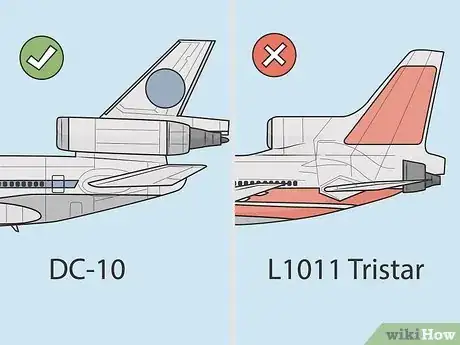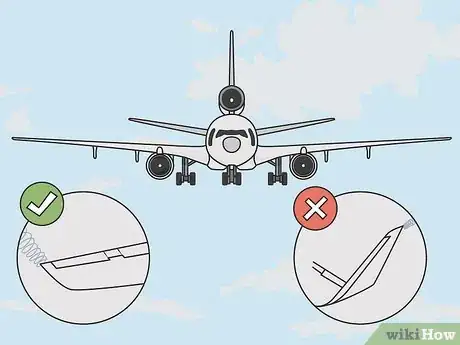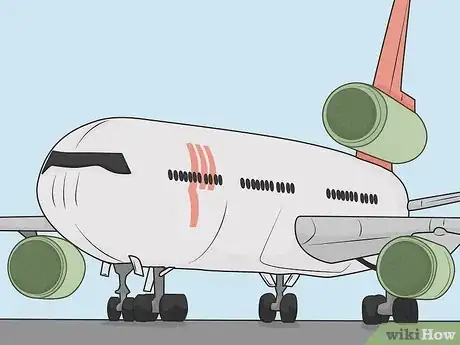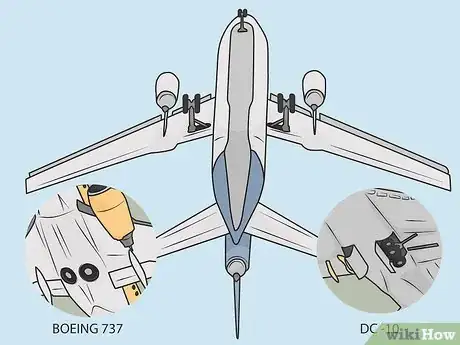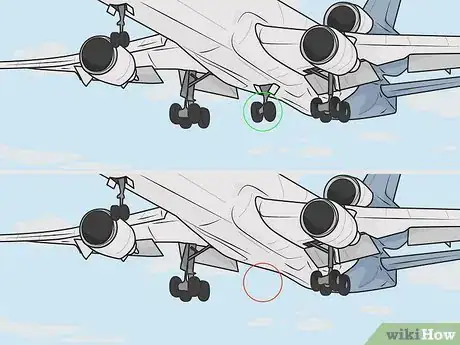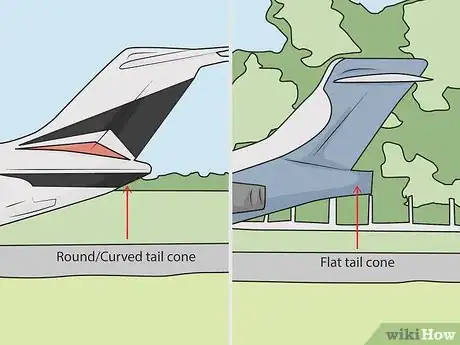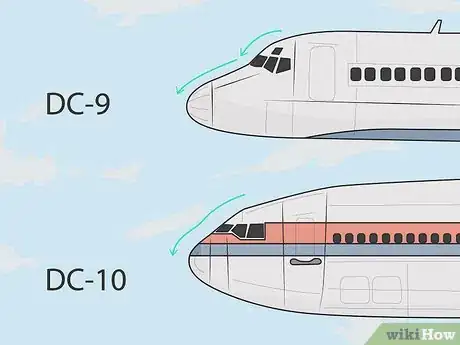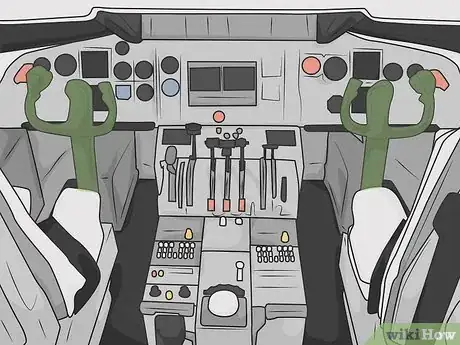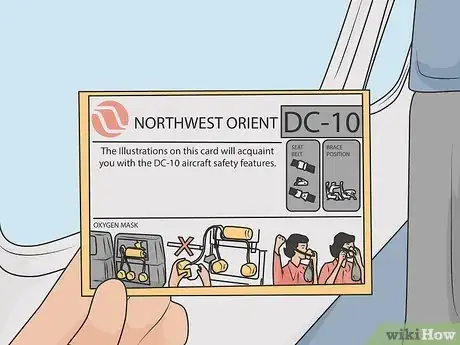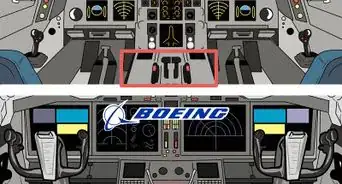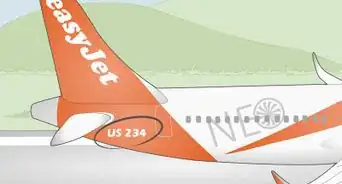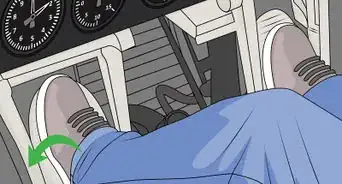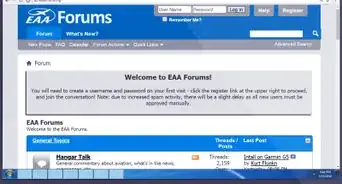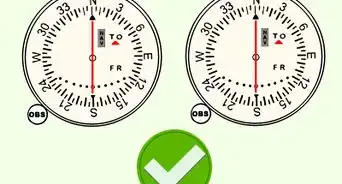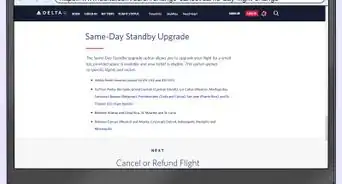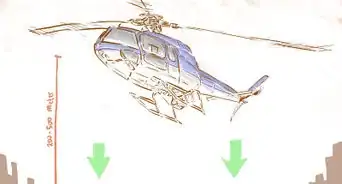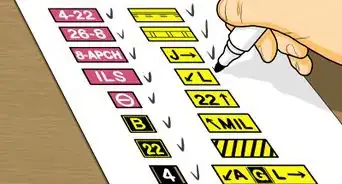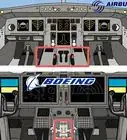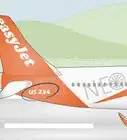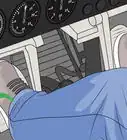wikiHow is a “wiki,” similar to Wikipedia, which means that many of our articles are co-written by multiple authors. To create this article, volunteer authors worked to edit and improve it over time.
There are 7 references cited in this article, which can be found at the bottom of the page.
This article has been viewed 15,111 times.
Learn more...
McDonnell Douglas used to be one of the largest carriers in history until Boeing bought the company in 1997. However, despite the discontinuation of McDonnell Douglas’s in a lot of airlines, some of its aircraft are still in service, so it can be tricky to determine the model or type of aircraft. If you are wondering though, then you've come to the right place. In this article, you'll learn some easy ways to tell whether the airplane in front of you is a McDonnell Douglas or not.
Steps
Looking at the Exterior Design
-
1Look at the engine placement of the aircraft. McDonnell Douglas is famous for its aircraft particularly because of the unique areas of engine placement. However, the placement still differs from the different aircraft families, so be sure to not immediately assume something.[1]
- See if the engine is placed in/on the tail. This means that the engine is somewhat part of the tail, and it connects it. If it is, it's very likely that the aircraft is a DC-10 or MD-11, as it is one of the very few aircraft with this distinct style. Verify this and see if there are 2 other engines below the wings.[2]
- Be careful to correctly differentiate a DC-10 and MD-11 from a Lockheed L1011 Tristar. The Tristar's engines don't fully go passed the tail, and the engine sort of "closes" as it reaches the tail.
- See if the engines are placed directly in front of the tail on the body of the aircraft. [3]
This means that the engine is connected to the body of the aircraft, very close to the tail. If you do see it, it's most likely an MD series or a Dc series aircraft.
- Some private jets also have the engines mounted on the body, so be sure to not only look at one aspect and immediately claim it is.
- See if the plane has 4 engines. The DC-8 has 2 engines on each side. The DC-8 looks are similar to an Airbus A340.
- See if the engine is placed in/on the tail. This means that the engine is somewhat part of the tail, and it connects it. If it is, it's very likely that the aircraft is a DC-10 or MD-11, as it is one of the very few aircraft with this distinct style. Verify this and see if there are 2 other engines below the wings.[2]
-
2Look to see if there are winglets, or small stabilizers poking out at the tip of the wings. Almost all McDonnell Douglas aircraft have no winglets, possibly because of the development age. This is an easy way that contributes to identifying whether an airplane is a McDonnell Douglas or not.
- Winglets help stabilize an aircraft. Most airplanes built in the 20th century don't have winglets.
Exception: While almost every aircraft developed by McDonnell Douglas has no winglets, the MD-11 still has distinct winglets on both wings.[4]
Advertisement -
3Look at the shape of the engines.[5] All airplanes developed by MDC have round, circular engines. However, the models developed by the company still have similar but different engines, so it's important to take note of them.
- See if the engines on the wing are large but short. On a DC-10, DC-8, and MD-11, the engines mounted on the wings form almost a regular cylinder. Its height and length are almost the same.
- See if the engines mounted on the body are short but long. On MD and DC models, the air intake of the engines is small compared to regular commercial aircraft, but lengthwise, it's actually a bit longer compared to similar aircraft. The engines sort of form a tube. [6]
-
4Look to see if the gear is no longer visible after takeoff. This might be a little tricky because it's impossible to determine it when it's on the ground. When the aircraft takes off, see if the gear goes back into a compartment and the compartment "door" shuts when it's fully retracted. This means that the gear is not visible after takeoff.
- Boeing is one of the only large aircraft carriers that have the back gears visible after takeoff. The gear retracts into a compartment, but there is no "door" to hide it.
Did You Know? Pilots use what is called a gravity extension to unlock the gear compartment when hydraulics or the fluids that control light controls fail.
-
5Look at the amount of gear in the rear tires. The amount of gear, by which, just means the number of pairs of tires. Look at a plane from side-view and count the number of tires.
- See if the plane has a double-bogey, or 2 pairs of tires on each side.[7] Look from side view and if you see 2 sets of gear, it might be a DC-10 or DC-8. Comparing to other long-haul aircraft, the 3 models have very little gear. This just means that there is
- See if the airplane has 2 sets of gear, the same as the DC-10 and DC-8. However, if you notice an extra pair of gear located between the 2 back gear (in the middle of the aircraft), it's likely the airplane is an MD-11.
- See if there is only one set of tires on each side. If there is only one, it's possible that the aircraft is an MD or DC series.
-
6Look at the angle of the last window pane on the cockpit windows. Every aircraft has its own special design of a cockpit window and is one way to tell a McDonnell Douglas from the 2 larger carriers (Boeing and Airbus) as they have distinct differences.
- See if the side window pane has a very sharp angle, forming an acute angle. If it does have a very sharp angle at the side window, it's possible that the aircraft is a DC-10 or MD-11.
- See if the side window pane is an obtuse angle or an angle over 90 degrees. It should have a straight vertical pane and a diagonal side pane. If it does, it's possible it's a DC-9, DC-8, or MD series aircraft.
- Boeing and Airbus have different cockpit windows. Airbus's forms almost an exact 90-degree angle, and Boeing's forms an acute angle.
-
7Look at the tail cone or the very end of the aircraft. Look at the aircraft from a slanted view and examine the tail cone or the place where the aircraft "ends."
- See if the tail cone is round or curved, similar to every other aircraft. If it is, it's probable that the aircraft is a DC-9, DC-10, or MD-11.
- This isn't the best way to identify if the aircraft is a McDonnell Douglas. The best and most reliable way is to look at all the aspects and see if all or most of them match.
- See if the tail cone is flat, and isn't round.[8] From the side view, if the cone does not form a round or curved edge. It should be flat and skinny. If it is, it's possible that it's an MD series.
- See if the tail cone is in-between, which means that it's just right. It's not flat or round, which means that it is flat and round. If it is, it's possible that the aircraft is a DC-8.
- See if the tail cone is round or curved, similar to every other aircraft. If it is, it's probable that the aircraft is a DC-9, DC-10, or MD-11.
-
8Look at the nose of the aircraft. Examining the nose, or the tip of an airplane is very important. It has different features.
- The DC-9's nose is round but comes at a sharp angle. Or, in a simpler way, the DC-9 has a blunt nose but is quite long compared to aircraft its size. [9] The nose meets the cockpit at a sharp angle, and its nose is round and blunt.
- The DC 10's nose is round and blunt the whole way. The cockpit window meets the nose at no big angle. It sort of "connects" making the cockpit look as if it's part of the nose. [10]
- The MD-11 has a nose shape very similar to a DC-10's but just pointier. It also closely resembles an Airbus's.
- The MD Series aircraft has a nose shape very similar to a DC-9's (so it does come at a sharp angle, the nose it longer, etc.), but the nose is pointier and less blunt.
- The DC-8 has a very sharp nose. The bottom is considerably flat, but the top comes down at a sharp angle and it makes the nose very sharp and illusionally long.
Using Other Methods
-
1Take a look at the cockpit, if possible. Although safety with the flight deck has become ever so struck since 9/11, there's still a possibility, as long as the captain allows it.
- See if the aircraft has a yoke, or a "U" shaped steering wheel very visible in front of the two seats: captain's and first officer's. If it doesn't, it's definitely not a McDonnel Douglas made commercial jet. If it does, it's possible it is an MD.
-
2Look at the TV display on each gate. At a gate, it will most likely mention the destination, time, weather, and probably the gate. The aircraft to look out for are listed below.
-
3Examine the safety card onboard. There's always mentions the model of the aircraft. This will tell you the model. Watch out for these names and you'll know there a McDonnell Douglas:[11]
- DC-8
- DC-9
- DC-10
- MD-11
- MD-81
- MD-82
- MD-83
- MD-87
- MD-88
- MD-90
Warning! Keep in mind that all McDonnell Douglas is Boeing since it was bought by Boeing. Don't be surprised if it says "Boeing DC-10" or anything of the sort.
-
4Look at the model on your flight ticket or your "online ticket." It should and will mention the name of the aircraft, and should once again tell you. The aircraft types are listed above.
-
5Ask a crew whether onboard or at the airport. They have sufficient knowledge to know which planes are which. They handle a lot of aircraft and planes a day, so they do have a lot of knowledge in aviation.
- When at an airport, just go to the attendant at a specific gate and ask her what model aircraft S/he's handling. They'll probably have a knowledge of it and tell you. Remember that sometimes it's best to ask the crew that's in charge of the gate or has definite knowledge of the airplane.
- There are many people you can ask, including pilots you spot or just crew members working. Remember that they probably have more knowledge than you if you aren't an aviation geek, so don't doubt them because you feel like it.
- If onboard, just request the flight attendant and ask what model aircraft you're on. S/he will most likely give you a clear explanation. It's most likely that the crew is right; they probably flew on that aircraft for months or even years, so don't doubt them if you aren't an expert or don't have a lot of proof.
- When at an airport, just go to the attendant at a specific gate and ask her what model aircraft S/he's handling. They'll probably have a knowledge of it and tell you. Remember that sometimes it's best to ask the crew that's in charge of the gate or has definite knowledge of the airplane.
Warnings
- Don't make an assumption if a plane matches one or two of these situations. Try to figure them out after all or most of these details match.⧼thumbs_response⧽
- Note that since MDC was bought by Boeing, some of them will have "Boeing" in the model name.⧼thumbs_response⧽
- Keep in mind that McDonnell Douglas isn't that common anymore, so don't be surprised if you don't find a lot.⧼thumbs_response⧽
References
- ↑ https://airlinerspotter.com/mcdonnell-douglas-dc10-md10-md11-spotting-guide.htm
- ↑ https://www.airliners.net/photo/KLM-Royal-Dutch-Airlines/McDonnell-Douglas-DC-10-30/1724211
- ↑ https://airlinerspotter.com/mcdonnell-douglas-md-series-spotting-guide.htm
- ↑ https://airlinerspotter.com/mcdonnell-douglas-dc10-md10-md11-spotting-guide.htm
- ↑ https://modernairliners.com/mcdonnell-douglas-dc-10/
- ↑ https://airlinerspotter.com/mcdonnell-douglas-md-series-spotting-guide.htm
- ↑ https://www.britannica.com/technology/DC-10
- ↑ https://airlinerspotter.com/mcdonnell-douglas-md-series-spotting-guide.htm
- ↑ https://www.airlinercafe.com/page.php?id=396
